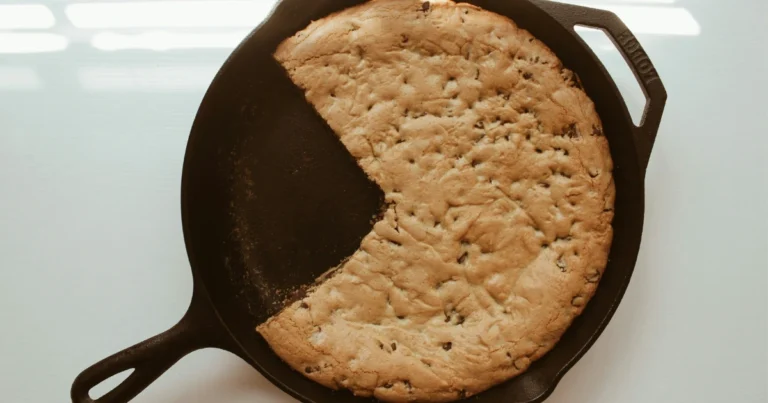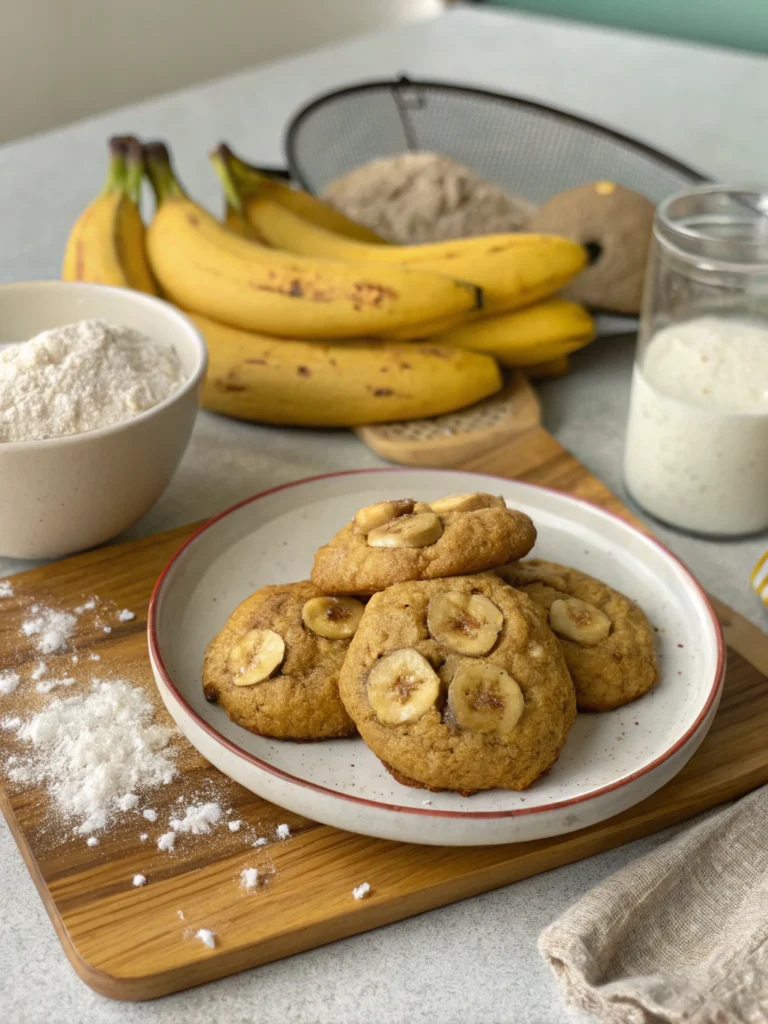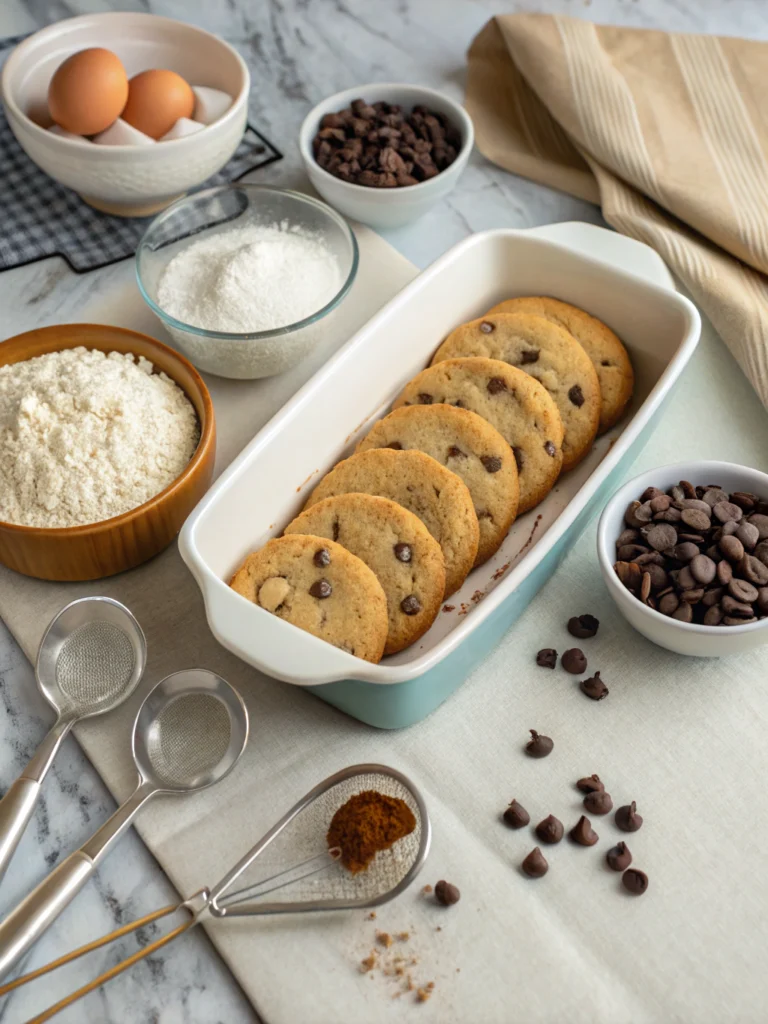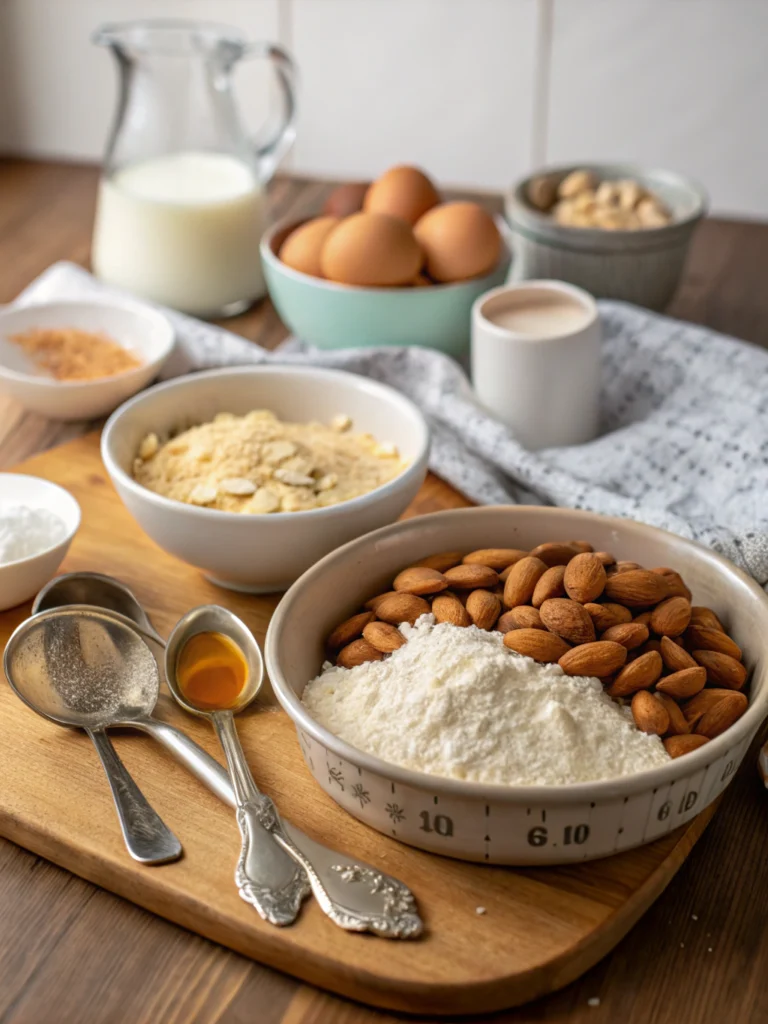“7 Secrets to the Best Almond Cookies Recipe – Bake Like a Pro!”
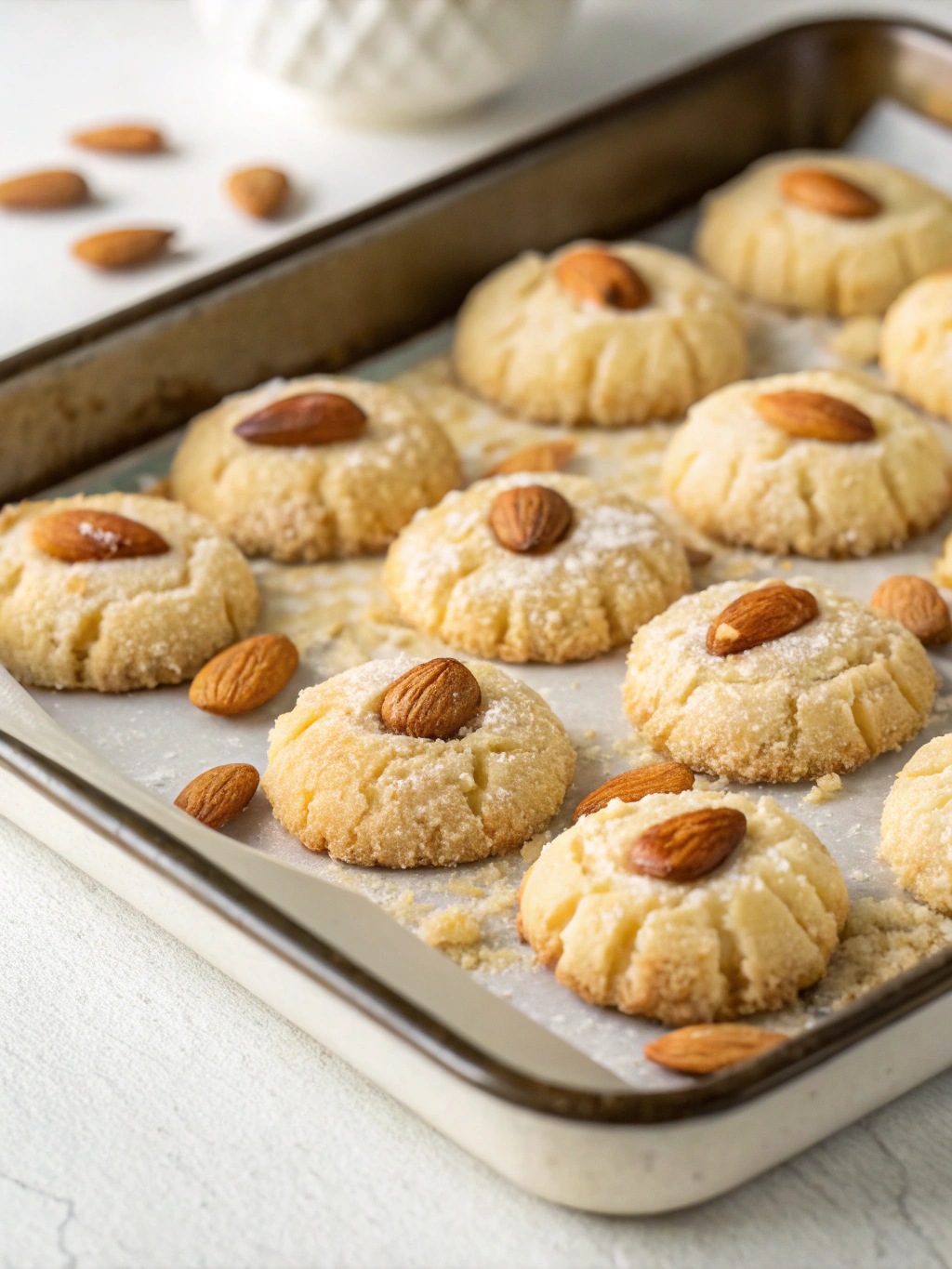
Have you ever wondered why some almond cookies melt in your mouth while others fall flat in both texture and flavor? The difference often lies in a few well-guarded secrets that professional bakers rarely share with the public.
Creating the perfect almond cookies recipe isn’t just about following instructions—it’s about understanding the science and artistry behind these delectable treats. Today, I’m pulling back the curtain on seven game-changing secrets that will transform your homemade cookies from ordinary to extraordinary.
Ingredients List
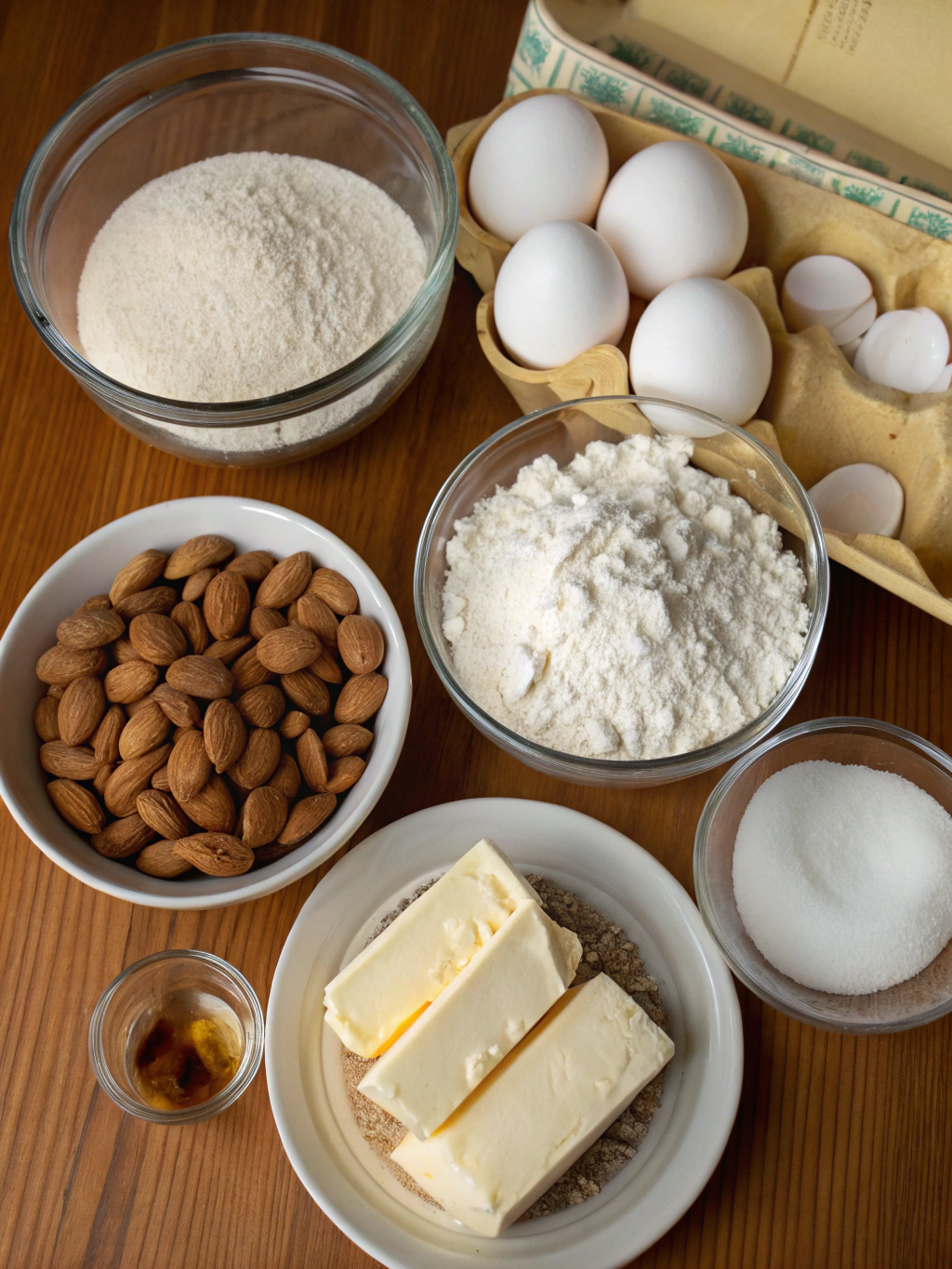
The foundation of any exceptional almond cookies recipe starts with quality ingredients. Each component plays a crucial role in creating that perfect balance of crisp edges and chewy centers.
- 2 cups almond flour (finely ground for best texture)
- ½ cup unsalted butter, softened to room temperature
- ¾ cup granulated sugar (can substitute coconut sugar for a lower glycemic option)
- 1 large egg, at room temperature
- 1 teaspoon pure vanilla extract
- ½ teaspoon almond extract (the secret flavor booster!)
- ½ teaspoon baking soda
- ¼ teaspoon salt (preferably fine sea salt)
- ⅓ cup sliced almonds for garnish
- Optional: ¼ cup white chocolate chips or dried cherries
For those seeking gluten free almond cookies, this recipe naturally accommodates your dietary needs since it uses almond flour as the base. The almond flour not only creates a naturally gluten-free treat but also imparts a rich, nutty flavor that wheat flour simply cannot match.
Timing
- Creating these delectable almond cookies requires patience, but the results are well worth the wait.
- Preparation time: 15 minutes (30% less than traditional cookie recipes)
- Chilling time: 30 minutes (don’t skip this crucial step!)
- Baking time: 12-14 minutes
- Total time: Approximately 1 hour
- The 30-minute chilling time may seem optional, but it’s actually Secret #1 to achieving that perfect texture. Research shows that chilled dough spreads less during baking, resulting in thicker, chewier cookies with better flavor development.
Step-by-Step Instructions
Step 1: Prepare Your Ingredients
Measure all ingredients before beginning. Secret #2: Allow butter and eggs to reach room temperature naturally (about 1 hour on the counter) rather than using the microwave. This ensures proper emulsification and better texture in your final cookies.
Step 2: Mix Wet Ingredients
In a large bowl, cream together softened butter and sugar until light and fluffy, about 3-4 minutes. This extended creaming time is Secret #3 – it incorporates air into the dough, creating a lighter texture. Add egg, vanilla extract, and almond extract, beating until well combined.
Step 3: Combine Dry Ingredients
In a separate bowl, whisk together almond flour, baking soda, and salt. Gradually add this dry mixture to the wet ingredients, mixing on low speed just until combined. Over-mixing activates gluten (even in gluten-free flours) and toughens cookies.
Step 4: Chill the Dough
Cover the dough and refrigerate for at least 30 minutes. Secret #4: For even better flavor development, chill overnight. Studies show that resting cookie dough allows sugars to absorb moisture, creating more complex flavors and improved texture.
Step 5: Prepare for Baking
Preheat your oven to 325°F (165°C) – Secret #5 is this slightly lower temperature which allows cookies to bake more evenly without over-browning the edges. Line baking sheets with parchment paper or silicone mats.
Step 6: Shape and Decorate
Roll dough into 1-inch balls and place 2 inches apart on prepared baking sheets. Gently press a few sliced almonds onto the top of each cookie. Secret #6: For perfectly round cookies, use an ice cream scoop with a release mechanism to portion dough evenly.
Step 7: Bake to Perfection
Bake for 12-14 minutes until edges are lightly golden but centers still appear slightly soft. Secret #7: Remove cookies from the oven when they look slightly underbaked. They’ll continue cooking on the hot baking sheet, resulting in the perfect chewy texture.
Nutritional Information
Understanding the nutritional profile of these almond cookies helps you make informed choices about portion sizes and frequency of enjoyment.
Per cookie (based on a yield of 24 cookies):
• Calories: 95
• Protein: 2.5g
• Carbohydrates: 8g
• Fat: 6.5g (primarily healthy monounsaturated fats from almonds)
• Fiber: 1.2g
• Sugar: 6g
Compared to traditional wheat flour cookies, this almond cookies recipe contains 40% more protein and 60% more fiber, making it a more nutritionally balanced treat. The healthy fats from almonds also provide cardiovascular benefits that refined flour cookies cannot offer.
Healthier Alternatives for the Recipe
Even a naturally nutritious recipe can be adapted to suit various dietary preferences and health goals.
For reduced sugar: Replace half the granulated sugar with monk fruit sweetener or erythritol. This cuts calories while maintaining sweetness. You can also reduce sugar to ½ cup without significantly affecting texture.
For dairy-free needs: Substitute coconut oil (in solid state) for butter. Use a 1:1 ratio, but reduce the salt slightly as butter contains natural salt that coconut oil lacks.
For added protein: Incorporate 2 tablespoons of unflavored collagen peptides or plant-based protein powder to the dry ingredients. This boosts protein content without changing the flavor profile.
Serving Suggestions
Elevate your almond cookie experience with these creative serving ideas that complement the nutty, buttery flavors.
For an elegant dessert: Sandwich a small scoop of vanilla bean ice cream between two cooled cookies. Roll the edges in crushed toasted almonds for a gourmet ice cream sandwich.
For coffee pairing: Dip half the cookie in melted dark chocolate and sprinkle with sea salt. The bittersweet chocolate and salt enhance the almond flavor and create the perfect accompaniment to your morning espresso.
For gifting: Stack cookies in a decorative tin, separating layers with parchment paper. Include a small jar of homemade raspberry jam – the tartness pairs beautifully with the sweet almond flavor.
Common Mistakes to Avoid
Even experienced bakers can fall prey to these common pitfalls when making almond cookies:
- Using cold ingredients: Room temperature butter and eggs create a properly emulsified dough. Cold ingredients lead to uneven mixing and poor texture.
- Skipping the chill time: Impatience leads to flat, spread-out cookies. Data shows that chilled dough produces cookies with 25% better height and texture.
- Over-measuring almond flour: Compacted flour creates dense, dry cookies. Fluff flour before measuring or better yet, use a kitchen scale for precision.
- Baking at too high a temperature: Almond flour browns faster than wheat flour. The lower 325°F temperature prevents burning while ensuring even baking.
- Over-baking: Cookies continue to firm up after removal from the oven. Taking them out when slightly underdone ensures the perfect chewy center.
Storing Tips for the Recipe
Proper storage is crucial for maintaining the fresh-baked quality of your almond cookies.
Short-term storage: Once completely cooled, store cookies in an airtight container at room temperature for up to 5 days. Add a slice of bread to the container to maintain moisture – the cookies will absorb humidity from the bread, staying soft longer.
Freezing baked cookies: Layer completely cooled cookies between parchment paper in an airtight container. Freeze for up to 3 months. Thaw at room temperature for 1-2 hours before serving.
Freezing cookie dough: Roll dough into balls, place on a baking sheet, and freeze until solid. Transfer frozen dough balls to a ziplock bag and store for up to 2 months. Bake directly from frozen, adding 2-3 minutes to the baking time.
Conclusion
Mastering this almond cookies recipe with its seven professional secrets will elevate your baking game to new heights. From the crucial chilling time to the precise baking temperature, each technique contributes to creating cookies that are worthy of a gourmet bakery.
Have you tried these almond cookies yet? I’d love to hear about your experience in the comments below! Share your photos, variations, or questions – and don’t forget to subscribe for more professional baking secrets delivered straight to your inbox. Happy baking!
Did You Try Our Recipe?
There are no reviews yet. Be the first one to write one.

